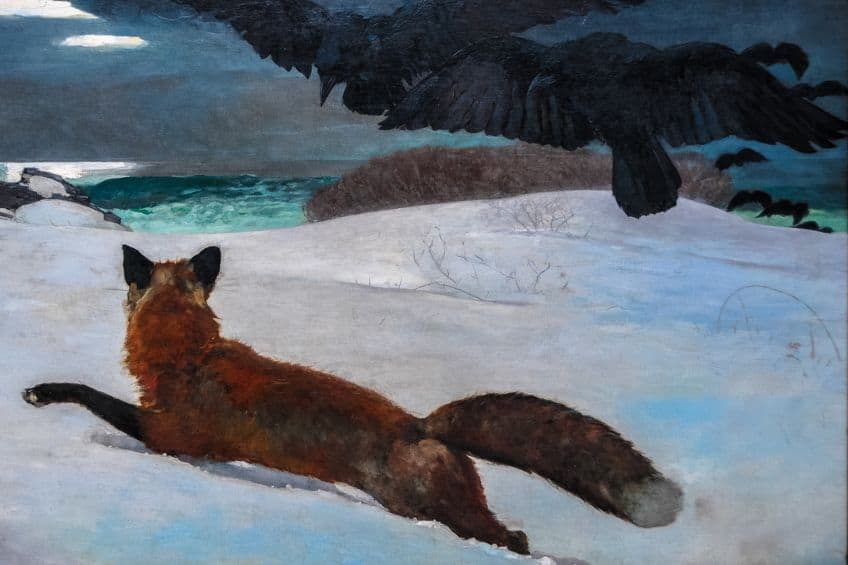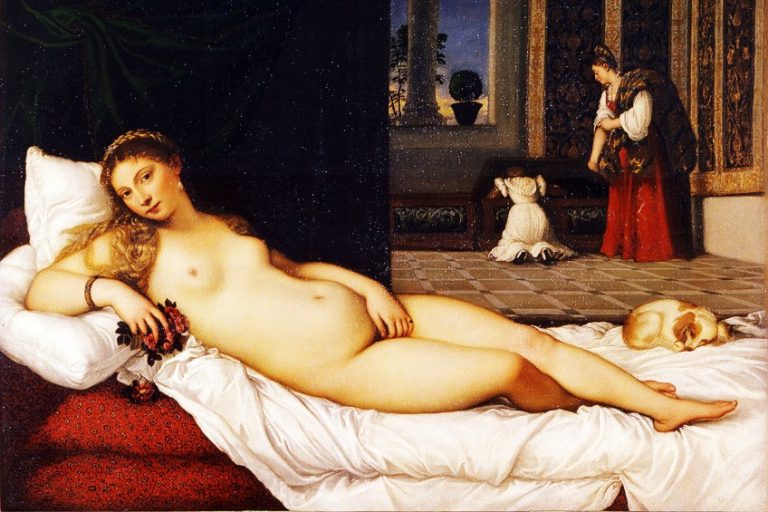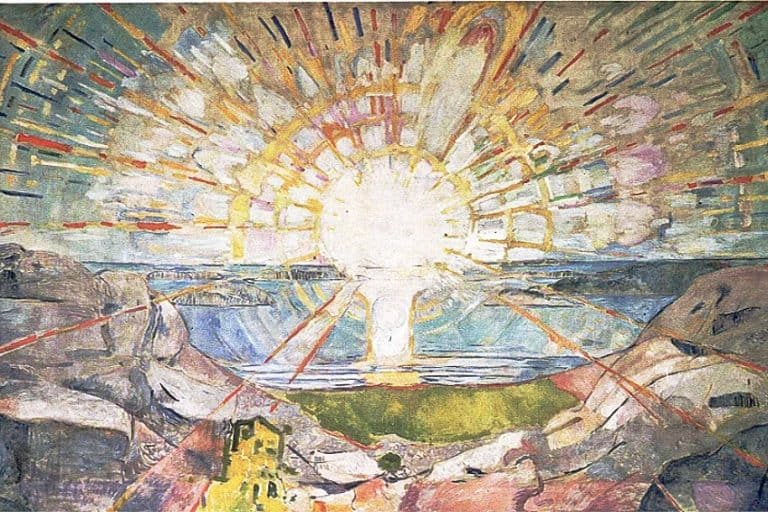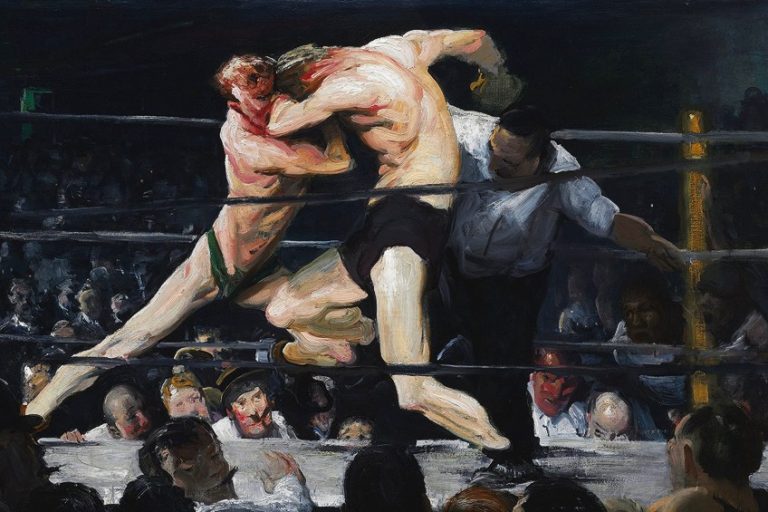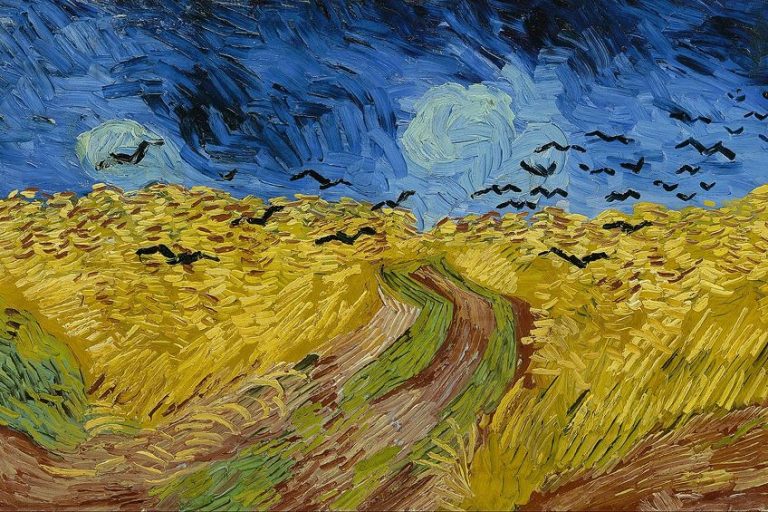“The Fox Hunt” by Winslow Homer – A Famous Painting Analysis
The Fox Hunt, painted in 1893 by the renowned American artist Winslow Homer, stands as a masterful example of his later work and a striking representation of survival in the natural world. This oil on canvas, notable for its dynamic composition and dramatic use of color, depicts a fox struggling through deep snow, pursued by a murder of crows. The painting captures the stark, unforgiving winter landscape with extraordinary realism and intensity, reflecting Homer’s fascination with nature’s harshness and beauty. The Fox Hunt, held in the collection of the Pennsylvania Academy of the Fine Arts, underscores Homer’s profound skill in portraying the interaction between wildlife and the environment, and remains a poignant testament to his legacy as one of America’s foremost realist painters.
Key Takeaways
- The Fox Hunt is a significant work by Winslow Homer reflecting themes of nature’s harshness and survival.
- Painted in 1893, this oil on canvas captures a stark, Darwinian perspective through its wildlife subject matter.
- The piece stands as a critical milestone in Homer’s career and American art history.
Historical Context
| Artist | Winslow Homer (1836 – 1910) |
| Date Created | 1893 |
| Medium | Oil on canvas |
| Genre | Landscape, Genre Painting |
| Period/Movement | Realism, American Naturalism |
| Dimensions (cm) | 96.5 x 174 |
| Series/Versions | Single artwork |
| Where Is It Housed? | Pennsylvania Academy of the Fine Arts, Philadelphia, United States |
| What It Is Worth | Estimated over $10 million (based on recent auction results for similar works by Homer) |
The Fox Hunt, painted by American artist Winslow Homer in 1893, is a remarkable oil on canvas that captures a powerful moment in nature. Homer, renowned for his depictions of American life and landscapes, created this large-scale work during a winter stay at his studio in Prouts Neck, Maine.

The painting presents a dramatic scene featuring a solitary fox struggling through deep snow while crows, symbols of impending doom, loom above. Interpreted as Homer’s dramatic exploration of natural selection and survival, the painting’s composition and subject matter have invited extensive analysis and acclaim. The Fox Hunt is notable not only for its artistry but also as Homer’s first piece to be acquired by a major museum, signifying his transition into the pantheon of celebrated American artists.
The work stands as a testament to Homer’s skills in narrative and the use of visual metaphor, telling a story that goes beyond a simple moment in nature, reflecting the harsh realities of survival and the relentless cycles of life and death.
Significance of 1893 in American Art
The year 1893 was a pivotal one for American art, marking a time when artists like Winslow Homer were pushing the boundaries of art to embody themes of nature and survival, reflective of Darwinian ideas. Winslow Homer, an American artist renowned for his landscapes and marine subjects, found inspiration in the rugged coast of Maine, specifically Prouts Neck. The period was marked by a search for a national identity in art, and Homer’s work was an integral part of this movement. The Fox Hunt illustrates the artist’s mastery in portraying the raw struggle for survival, both a common theme in the natural environment and a metaphor for human experiences.

The Pennsylvania Academy of the Fine Arts
The Pennsylvania Academy of the Fine Arts, located in Philadelphia, has the distinction of being the first artwork by Homer to enter a major museum collection. Founded in 1805, the Academy is the oldest art museum and school in the United States. It also boasts a significant history of supporting American artists and contributing to the country’s cultural heritage. The Fox Hunt not only represents the caliber of work that the Academy endorses but also solidifies Homer’s status as a foremost figure in American art.
Furthermore, its presence in the Academy is a testament to the institution’s role in shaping and preserving the narrative of American art history.
Artistic Analysis of The Fox Hunt
The Fox Hunt, created by Winslow Homer in 1893, serves as a masterful reflection of Darwinian themes through its depiction of a harsh winter landscape and the struggle for survival. The artwork employs intricate detail to capture the raw interaction between the beleaguered fox and the ominous crows in deep snow.

Darwinian Themes and the Natural Environment
Winslow Homer’s The Fox Hunt is often considered a Darwinian painting, as it vividly portrays survival of the fittest within the unforgiving elements of nature. The fox, encumbered by deep winter snow, represents the vulnerability of life in a natural environment that is indifferent to individual struggle.
This scene is further intensified by the presence of crows that circle above, symbols of both death and competition for survival.
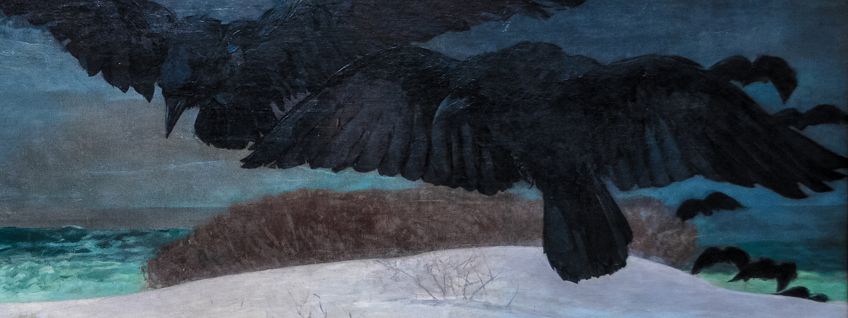
Techniques and Composition
Homer utilizes a Realist style, painting with precision to bring forth the intricate detail of the snow-covered landscape. The use of oil on canvas allows for rich texture and depth, conveying the oppressive weight of the winter settings. The composition is constructed in such a way that the viewer’s eye is directed toward the central figure of the fox.
This has the effect of highlighting its isolation and its battle against the elements and predators.

Symbolism and Themes
In The Fox Hunt, various elements act as symbols that deepen the narrative. The fox, isolated and endangered, symbolically struggles against not just the predators but the broader concept of nature’s challenges. The crows signify relentless forces that prey on vulnerability, whereas the expansive snow and stark winter landscape evoke the cold reality of the natural world’s indifference.
Homer amalgamates these themes to offer commentary on the stark realities of existence and survival.

Critical Reception and Legacy
The Fox Hunt has received significant attention for its depiction of survival and tension in nature. It is considered a masterpiece of American art, eliciting strong reactions and interpretations over time from both contemporary critics and modern evaluators. When it debuted, The Fox Hunt drew various interpretations for its stark portrayal of a solitary fox surrounded by crows in a snow-covered landscape. Critics focused on the struggle for survival and the raw, sometimes brutal, realities of nature. The work was acknowledged for its ability to stir a visceral response from the viewer, capturing the attention of the art world. The presence of hungry crows and the evident strain on the fox accentuated the harshness of the hunter and the hunted, creating a powerful narrative of the fight for existence.
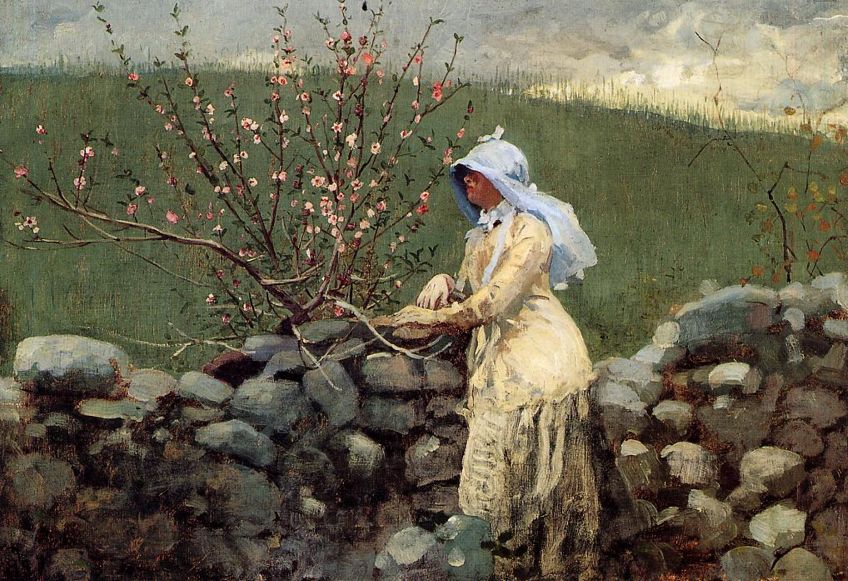
The Fox Hunt in Modern Evaluation
Today, The Fox Hunt is often regarded as one of Homer’s most profound contributions to American art. Its place in modern evaluation has only solidified over time:
- The painting’s influence: It is frequently studied by art historians and is a staple in discussions about narratives of nature in American art.
- Critics’ insight: Modern critics highlight the painting’s portrayal of tension and the Darwinian theme of survival as elements that elevate it to the status of a masterwork.
- Institutional recognition: Esteemed for its complex narrative and technical prowess, the painting now resides in the Pennsylvania Academy of the Fine Arts in Philadelphia, marking Homer’s prominence in the institutional canon of American artists.
The painting continues to resonate with audiences and critics alike as a piece that expertly encapsulates the themes it seeks to depict, securing its legacy in the annals of American art history.
Influence and Connections to Other Works
Winslow Homer’s The Fox Hunt holds a significant place as it reflects the evolution of his artistic style and has influenced American art profoundly.

Relation to Homer’s Oeuvre
In the broader context of Winslow Homer’s work, The Fox Hunt is a reflection of his deep engagement with themes of nature and survival. This piece echoes the intensity found in other works such as The Gulf Stream, where the tumultuous sea symbolizes nature’s indomitable forces. Similarly, Right and Left, though depicting a more instantaneous moment, shares the portrayal of primal struggle. In contrast, works like Breezing Up (A Fair Wind) and The Herring Net offer a lighter, more optimistic outlook on humanity’s interaction with nature.
These contrasting depictions underscore the versatility and breadth of Homer’s exploration of the human condition.
Snap the Whip represents the more pastoral and innocent side of Homer’s art, showcasing children at play, whereas The Fox Hunt captures the bleakness of a life-or-death predicament. Notably, these works exclude Homer’s own image or any direct Self-Portraits, yet they are undeniably imbued with his unique signature—not in the form of a physical Signature, but through the distinctiveness of his thematic and stylistic choices. The inclusion of a Fox’s Pelt may serve as a connected emblem between The Fox Hunt and his other works, representing the recurring theme of nature’s cycles of life and death.
Impact on American Art
The Fox Hunt has established itself as more than just a frozen moment of natural drama; it’s a representation of the enduring power of American art. It marked a departure from the glorified depictions of nature and anchored a new realism grounded in the raw struggle for survival. As evidenced by its consideration among scholars and critics, the painting is regarded as a pivotal piece that helped pave the way for American artists to explore complex, realistic themes with verve and authenticity.

The painting’s prominence grew when it became Winslow Homer’s first work to enter a major museum collection, magnifying its impact. It set foundational tones for authenticity in American art, narrating without romanticism, an approach later mirrored in various forms across modern and contemporary works. The compelling blend of survival, environment, and fate captured in The Fox Hunt continues to resonate, securing its creator’s reputation as a master of American realism and a harbinger of modern artistic sensibilities.
The Fox Hunt by Winslow Homer not only exemplifies the artist’s mature style and technical prowess but also serves as a profound meditation on nature’s relentless struggle for survival. This painting, with its vivid portrayal of a fox’s desperate plight amidst a harsh winter landscape, captures the raw, untamed beauty and inherent brutality of the natural world. Homer’s ability to evoke empathy and tension through his meticulous attention to detail and composition underscores his reputation as a master of American realism. The Fox Hunt remains a powerful and evocative work, inviting viewers to reflect on the delicate balance of life and death in the wilderness, and solidifying Homer’s place in the pantheon of great American artists.
Frequently Asked Questions
What Is Depicted in Winslow Homer’s The Fox Hunt?
In The Fox Hunt, a fox is shown navigating deep snow with difficulty, as it is menaced by a group of half-starved crows. Created in 1893, this painting is noted for its portrayal of survival in the face of daunting natural challenges.
What Artistic Techniques Did Winslow Homer Use in The Fox Hunt?
Homer utilized oil paints on canvas to create a stark contrast between the vulnerability of the fox and the barren winter landscape. The brushwork conveys the movement and tension inherent in the fox’s struggle against the elements and its predators.
How Does The Fox Hunt by Winslow Homer Reflect the Era in Which It Was Created?
The Fox Hunt is often regarded as an embodiment of Darwinian themes, reflecting the era’s interest in survival and the natural order. Painted during the winter at Homer’s studio in Prouts Neck, Maine, it mirrors the late 19th-century American fascination with the raw and formidable forces of nature.
Isabella studied at the University of Cape Town in South Africa and graduated with a Bachelor of Arts majoring in English Literature & Language and Psychology. Throughout her undergraduate years, she took Art History as an additional subject and absolutely loved it. Building on from her art history knowledge that began in high school, art has always been a particular area of fascination for her. From learning about artworks previously unknown to her, or sharpening her existing understanding of specific works, the ability to continue learning within this interesting sphere excites her greatly.
Her focal points of interest in art history encompass profiling specific artists and art movements, as it is these areas where she is able to really dig deep into the rich narrative of the art world. Additionally, she particularly enjoys exploring the different artistic styles of the 20th century, as well as the important impact that female artists have had on the development of art history.
Learn more about Isabella Meyer and the Art in Context Team.
Cite this Article
Isabella, Meyer, ““The Fox Hunt” by Winslow Homer – A Famous Painting Analysis.” Art in Context. June 10, 2024. URL: https://artincontext.org/the-fox-hunt-by-winslow-homer/
Meyer, I. (2024, 10 June). “The Fox Hunt” by Winslow Homer – A Famous Painting Analysis. Art in Context. https://artincontext.org/the-fox-hunt-by-winslow-homer/
Meyer, Isabella. ““The Fox Hunt” by Winslow Homer – A Famous Painting Analysis.” Art in Context, June 10, 2024. https://artincontext.org/the-fox-hunt-by-winslow-homer/.


